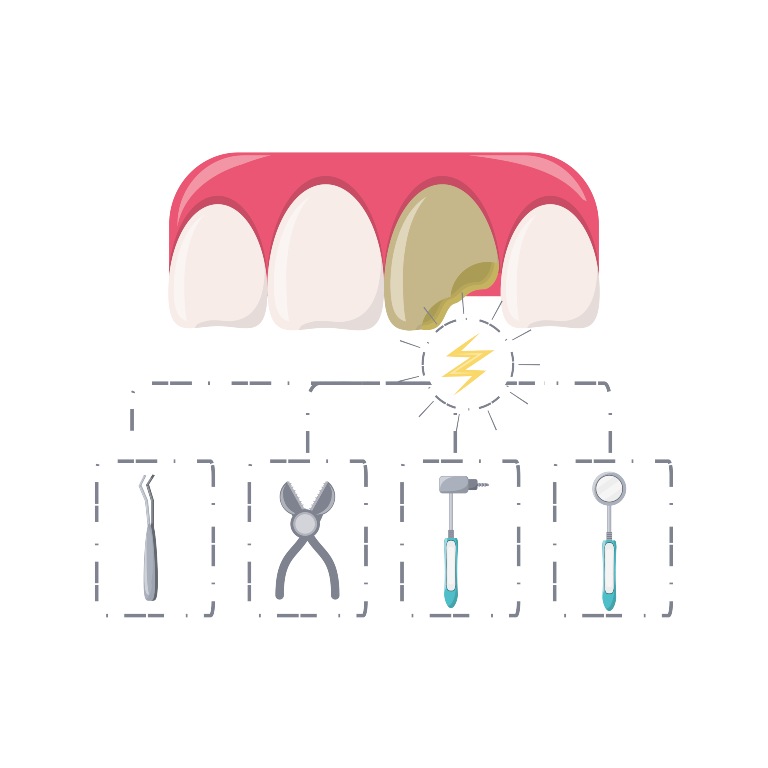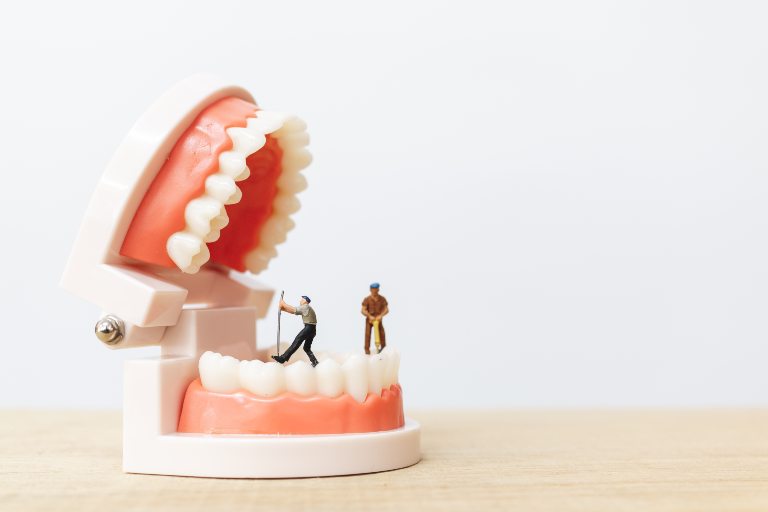The outer covering of our teeth is made of enamel, which is one of the strongest materials in our bodies. And yet even enamel has its limits. Strong impact on your teeth or failing to take proper care of your teeth can result in a chipped tooth. Some of the most common causes of chipped teeth are biting down on hard surfaces, playing contact sports with no mouth guard, or even grinding your teeth when you sleep.
We’re going to get into several different methods of dealing with chipped teeth in this article, but the two I’d like to put a special focus on are dental onlays and fillings. Onlays are one of the best quick fixes you can use for smaller chips in your teeth and can last up to a decade. Fillings, or inlays, are a sure way to repair any larger tooth damage that’s too big to be fixed with onlays.
Of course, different situations require different solutions and you’ll have to consult your own dentist to get the best solution for your specific situation. But it always helps to be familiar with the steps.

There are multiple options for dealing with chipped teeth depending on how severe, the location of the damage, and accompanying symptoms. A chipped tooth would not generally be considered a medical emergency unless there is severe pain and begins disturbing your eating and sleeping.
It is still strongly advisable that you go for a check up with your dentist to deal with any chipped teeth as soon as possible. A simple smoothing and polishing may be all the tooth needs to deal with a minor chip. If the damage is any more significant, your dentist will likely recommend these next few methods.
Tooth reattachment might be a good option if you’ve still got the fragment of tooth that broke off. To keep it moist, place it in a glass of milk. The calcium in milk will help keep it alive. Get to your dentist without any delay. If you get there in time, they might be able to get the fragment attached again using cement.
Bonding is used to fill out larger area of tooth that’s missing. Plastic or porcelain is cemented along the surface of your tooth in order to form correctly. The material is then dried using ultraviolet lights. Most bonds last up to 10 years.
Dental veneers made of composite or porcelain is a good way to cover surface cracks. Veneers are sturdy and can last up to 30 years.
Dental onlays will likely be suggested by your dentist if only part of your tooth is affected by the chip. Dental onlays are very reliable and can last for decades.
Dental inlays (fillings) are used for larger problems where more of the tooth is missing and needs more material to fill out the shape of the tooth.
Dental fillings are meant to last a good many years, but sooner or later all fillings need replacing. Our teeth are bombarded with constant use through eating, drinking, grinding, and clenching. All this activity can cause fillings to get chipped or worn away over time leaving gaps in between the tooth and filling which could allow entry for particles of food and bacteria that cause decay.

Bacteria such as these are not easily removed with a toothbrush and can cause decay underneath the filling or along the edge of it. Undiagnosed or untreated decay can progress and infect the part containing the tooth’s nerve and bloody supply called the dental pulp.
Regular dental checkups are very important to keep up with the issues you have with your teeth. Even if it seems to you that there’s nothing wrong with your teeth, there could be decay festering under one of your fillings that would only be identified through a dental examination. Don’t wait until your tooth cracks or the pain becomes unbearable. Instead try and have regularly scheduled dentist appointments to make sure there are no serious problems developing.
Inlays and Onlays are commonly known as indirect fillings. There are made by a dental laboratory and are used when part of the tooth is decaying or when there is not sufficient material from the original tooth to support a filling. The inlay is placed right on the surface of the tooth, as long as there is no damage to the tooth cusps. However, when there is a greater portion of tooth damaged, an onlay is used to cover the entire surface of the tooth.
Both inlays and onlays are made from composite resin material and are attached to teeth using adhesive dental cement. They restore teeth to their natural shape, provide support to straighten teeth and help prevent further deterioration or decay.
In today’s world, there are several materials available for dental fillings. Choosing the best material mostly depends on where the cavity is and how decayed the tooth in question is. Of course, you also have to take into account the cost of the material, what your insurance will cover and what your dentist recommends for your particular situation.
Cast gold doesn’t corrode and lasts for at least 10 years, but normally much longer. It can withstand heavy chewing on hard foods and some patients prefer the way gold looks.
It is expensive, however, and can cost up to 10 times more than amalgam fillings for instance. It takes two sessions with your dentist to place them.
Silver fillings, or amalgams, generally last to about 15 years and are more durable than composite fillings. They’re strong and can withstand a lot of heavy chewing. They’re also cheaper than composite and gold fillings.
They don’t necessarily “match” the color of your teeth and this might irritate some people. There is also a very small percentage of people that are allergic to mercury which is present in amalgam so be sure to have that checked.
Tooth-colored composite fillings look the most like your natural tooth color and can actually chemically bond to the structure of your tooth. They are easy to place and beneficial to your general oral health.
They are, however, not as durable as other materials and tend to last for about 5 years. You may also need several visits to your dentist to place them correctly.
All that being said, it’s highly important that you pay regular visits to your dentist and use the information you’ve learned together with what your dentist recommends to come to the best conclusions for your own teeth and dental care.

